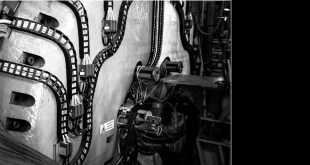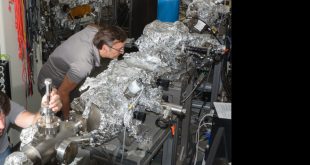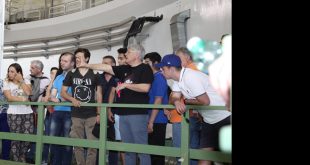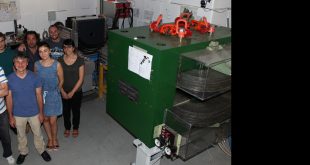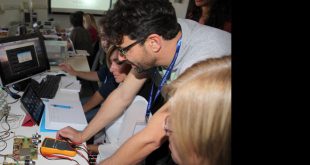The beauty of science is the protagonist once again. The winners of the 2018 edition of Global Physics Photowalk have been announced on 30th September. It is an international contest which welcomes both professional and amateur photographers to the major laboratories around the world, suggesting them to capture protagonists and typical moments of life in a research centre.
Read More »News
Interstellar ice in accelerators
The study of ice forming at low temperature on the interstellar dust at the origin of the planetary systems has been carried out by a collaboration among the LERMA Laboratory (Sorbonne, Paris), the CNRS “Laboratoire de Chimie Physique” of the Paris-Saclay University, the CERN of Geneva and the INFN Frascati National Laboratories.
Read More »EUROPEAN RESEARCHERS’ NIGHT 2018
At LNF the night will glow with the passion for Physics: Frascati National Laboratories join a new edition of the European Researchers’ Night,
Read More »LNF 2019 EDUCATIONAL: A NEW PROGRAM TO EXPERIENCE SCIENCE
It will start next January LNF 2019 Educational, a new edition of the yearly program addressed to Students, Teachers and General Public.
Read More »PHOTOWALK CONTEST 2018 – It’s time to vote!
The voting phase to choose the winner of the 2018 Global Physics Photowalk opened on the 27th of August. The selection by the national juries was concluded and now the popular vote will be decisive for the choice of the three most beautiful pictures of this edition.
Read More »PHOTOWALK 2018 – 3 pictures taken at LNF among the Italian finalists
There are also three photographs taken at the Frascati National Laboratories experimental apparata among the 12 Italian finalists in the international competition Photowalk 2018.
Read More »Laboratory summer closure
The Laboratory will be closed for summer holidays from Monday 6th to Friday 17th August. Have a nice holiday! Translation by Camilla Paola Maglione, Communications Office INFN-LNF
Read More »A new Director at TIFPA
Giuseppe Battistoni has been appointed as Director of TIPFA (Trento Institute for Fundamental Physics and Application), the national centre of the National Institute for Nuclear Physics of Trento collaborating with the Università di Trento, the Bruno Kessler Foundation and the Health Authority for Health Services of the Province of Trento. Battistoni will take up office on the 2nd of September.
Read More »Hunting for invisible matter
One of the most fascinating frontiers of fundamental physics is undoubtedly the search for dark matter, or that 27% of all the universe matter of which no direct interactions with ordinary matter have been detected.
Read More »Teachers’ date with INCONTRI DI FISICA 2018 gets closer
It will be held on 10–12 October the 18th edition of Incontri di Fisica 2018, an educational and training course in Modern Physics for high school teachers from all over Italy organized by the INFN Frascati National Laboratories.
Read More » INFN-LNF Laboratori Nazionali di Frascati
INFN-LNF Laboratori Nazionali di Frascati
